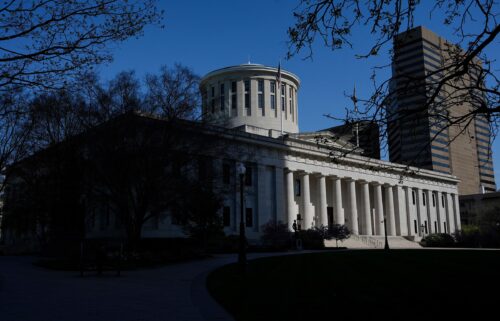Debunking two viral (and deeply misleading) 2019 maps

In the wake of a series of defeats at the ballot box on Tuesday — Kentucky Gov. Matt Bevin’s all-but-certain loss and Democrats’ takeover of the Virginia state House and Senate — Republicans, from President Donald Trump on down, have sought to downplay the meaningfulness of the results.
Arizona Republican party chairwoman Kelli Ward took that rationalizing to new heights late Wednesday when she pushed “send” on this tweet:
What Ward is driving at — and what seems to be supported by these county-by-county maps in both Virginia and Kentucky — is that there is a whole lot more red than blue on those maps. And yet, Democrats won in Virginia and appear to have ousted Bevin in Kentucky too. (Bevin, who trails Democrat Andy Beshear by just more than 5,000 votes, is asking for a recanvassing of the vote.)
Hence Ward’s “Should we look toward an #ElectoralCollege type system at the state level?” tweet. Because if, say, every county in a state got one electoral vote (just as a for-instance) then, obviously, looking at the two maps above, the results would be a lot more favorable to Republicans.
The problem with Ward’s argument is, well, it’s dumb. Very dumb.
And it’s dumb for a very simple reason: These county-by-county maps — whether in a single state or nationally — are hugely misleading. What they show is land, not population. So, when you see, say, a sparsely populated but large — geographically speaking — county in eastern Kentucky colored red and a small county with a major city in it colored blue, your first reaction might be: Hey, wait a minute — that red county is way bigger!
By that logic, of course, Alaska would be the most important and powerful state in the country. It’s super big!
These county-by-county maps have become a favorite Republican social media share in recent months. Last month, in fact, Trump tweeted this:
The problem, again, is that landmass doesn’t vote. People do. Which is why, when you allow for actual population in the country, the map looks a lot different. This one, by cartoonist Randall Munroe on his XKCD website, is a much more accurate depiction of what the 2016 election actually looked like.
Looks pretty different, right?
And, even if, say, we followed Ward’s logic — somewhat frightening! — and tried to institute an electoral vote system in the Kentucky governor’s race, it’s not a certainty (as she seems to think) that the result would be different. See, electoral vote allocation is based on population! Which is why Alaska has three electoral votes and California has 55!
So, if we allotted electoral votes by county in Kentucky, then Jefferson (city of Louisville) and Fayette (city of Lexington) would have lots more electoral votes than the very rural and lightly populated counties in the western reaches of the state.
The fact that the Electoral College is tied to population is why we have had only five instances in American presidential history in which the winner of the popular vote wasn’t also the winner of the electoral vote. It might seem more common than that because two of those five elections have come in the past 2 decades (2000 and 2016). But, prior to Al Gore’s popular vote victory/electoral college loss in 2000, it has been 112 years since it last happened. (I see you, Benjamin Harrison!)
It’s not clear whether Ward knows that history and understands the difference between people voting and land, uh, voting. What is clear, however, is that her sharing of the Virginia and Kentucky maps is deeply, deeply misleading.




